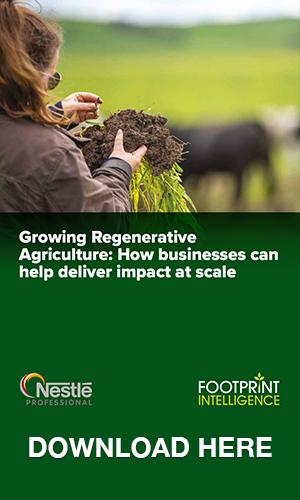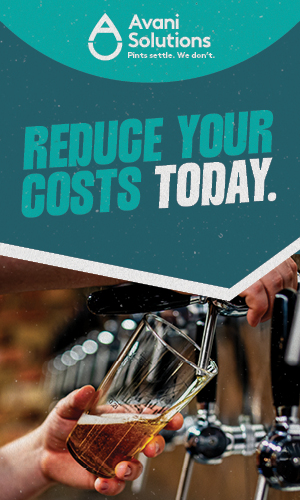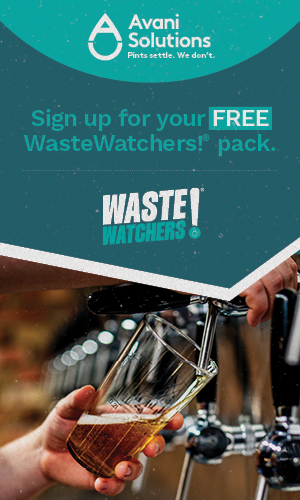This month’s column is the (ice) crème de la crème as we talk McFlurry, MacArthur and mandates. By David Burrows.
Delegates at the COP27 climate talks in Sharm el-Sheikh have reportedly resorted to eating three ice-creams a day after stalls ran out of food and Coca-Cola-sponsored water fountains ran dry. The news left my six-year-old speechless. Then she asked: have I got enough pocket money to go to Egypt?
We had to make do with the local McDonald’s. This was her first visit (apart from the 4am stops I used to make: her in the buggy resisting repose and me craving a cup of caffeine). I wanted to see what a McFlurry spoon looked like because the fast food chain had that morning announced that the “iconic” cutlery would no longer be made from plastic. Instead it will be made from “resilient, renewable, FSC-certified pressed-paper”.
Media outlets lapped up the move almost as quickly as my daughter did the McFlurry. Alas, I’d forgotten the plastic spoons had already been banned up here in Scotland. This fact also escaped the McDonald’s’ press team – a statement said the cutlery will be rolled out in restaurants across England and Wales, following “a successful switch” from plastic to paper cutlery in Scotland, the Republic of Ireland, and Northern Ireland in the first half of the year. By successful they mean enforced: single-use plastic cutlery has been banned in the EU under the single-use plastics directive, and in June Scotland aligned with this. England is likely to follow suit.
By shifting from plastic cutlery to paper-based, McDonald’s reckons it will eliminate 858 tonnes of plastic annually across the UK. That – and I am speculating here based on a spoon being about 3 grams – could represent some 286 million pieces of cutlery. All of which remain single-use. (To note, a number of further questions relating to the announcement went unanswered: what’s the fate of the spoons collected in restaurants; whether the new paper packaging is certified for home or industrial composting; had any analysis been done on whether reusable spoons were an option?). Deliveroo appears to be doing just the same, offering £2.5m of subsidies to its restaurant partners who switch to “sustainable packaging”. According to Packaging Insights Deliveroo defines this as packaging made from recyclable paper, cardboard or recycled plastic, or which is home compostable (on which subject there will be more soon as we try to unpick UCL’s controversial research).
Sense and sustainability
Efforts to introduce reusable packaging appear to have gone into reverse. The Ellen MacArthur Foundation (EMF) last week published an update on its global plastics commitment, involving a fair number of big fmcg brands; just 1.2% of the packaging in 2021 was reusable (down from 1.5% two years ago) and fewer companies are now planning pilots. There are four key issues with adoption of reuse models as far as I can see from this (and other) research: carbon, cost, convenience (for both consumers and companies) and collaboration.
Cost, convenience and collaboration were all addressed in Tesco’s recent report following a trial with Terracycle’s Loop. Other brands have also said that convenience for their customers remains a “pain point” – it is after all a fundamentally different way of shopping and buying food and beverages. Those who rely on ‘impulse purchases’ – and that includes a good deal of foodservice of course – may also struggle. But it’s not impossible.
Companies have continued to run trials and test things; they are learning all the time. In the early days of Burger King’s pilot a lot of people paid the £1 deposit but not many brought the packaging back, admitted the chain’s CFO Tim Doubleday at a UKHospitality event recently. Asda and Unilever meanwhile worked with Wrap to find out what the triggers and barriers are to people adopting reuse and refill schemes in supermarkets. Clear pricing is really important, they found. The cost of living crisis could actually be a great time to sell reuse to consumers: Asda was “surprised” by how many of its customers chose refill as a way to buy only as much as they needed, rather than buying big packets of things that don’t get used up thereby cutting food waste, wrote Susan Thomas, the chain’s senior director of sustainable commercial activities.
But as EMF’s report suggests, interest appears to be on the wane and there are question marks about company commitments to the reuse cause. Implementing these models takes time and money, Lux Research expert Mathilde della Fontana says. It’s no use companies trialling something for a few months and saying ‘this isn’t working’, she adds.
Perhaps they are not thinking about the bigger picture, or the reputational and revenue benefits. “Get the formula right and you have a multimillion-euro disruptive business taking sales away from single-use packaging with upscale refill experiences that are an improvement on the status quo,” wrote Paul Foulkes-Arellano, founder at Circuthon Consulting in a piece for Packaging Europe recently. One of his favourite examples currently is Foodles, a business in France that offers chef-prepared meals to office workers from digitally-operated smart fridges, all packaged in reusable containers. “The experience is superior to a work canteen,” he said.
Freed from reuse
When it comes to carbon, reuse tends to be superior to single-use, but brands (especially in foodservice) are confused by the odd bit of research showing the opposite. Wrap and EMF haven’t helped, either: a key target in their plastic pacts (UK and global respectively) is for packaging to be 100% reusable, recyclable or compostable, which gives equal prominence to reuse and single-use. Basically, it’s a get-out-of-reuse-free card, allowing businesses to stick with single-use. “[…] the waste hierarchy would suggest that reuse should be a higher priority,” noted MPs on the Environment, food and rural affairs (Efra) committee in their plastic report earlier this month. Here, here.
Reusables can actually help food businesses curb carbon, cut costs and keep customers happy. Research by the Rethink Plastic Alliance last year showed scaling up reusable food-and-beverage containers in the foodservice and hospitality sector by 50% by 2030 could save 2.6MtCO2e and EUR10.4bn (£9.2bn), for example. But all companies see are challenges. Confusion reigns. As a German study in the journal Resources, Conservation and Recycling in June notes: “[…] if neither theorists, nor companies, nor government agree on the sustainability of different types of packaging – how are consumers supposed to make correct assessments?” This confusion keeps companies (and consumers) in the safe space of single-use.
Perhaps what we need is a taskforce. So said the Efra committee. This special group would look to accelerate reuse and refill, and as such “should consider measures including charges on single-use products, mandatory reporting on companies’ plastic footprints, and how to raise public awareness of reuse schemes through campaigns as well as guidance and incentives for businesses”. Scotland has had one looking at environmental charges since 2018, and it’s paved the way for the (looming) latte levy.
Calls for rules and regulation rather than responsibility deals led by industry will intensify following EMF’s recent update and the Efra report. The latest figures from the global plastics commitment showed use of virgin plastic actually increased across those companies to have signed up; the 100% reusable, recyclable or compostable target also won’t be met, despite there being three years to go (they’ve reached 65.4%).
Facing the facts
The results could have a lasting impact on the think tank’s reputation, and may well signal the beginning of the end for the commitment. Interest and momentum could suffer. Some are not surprised we have ended up where we are on this. Others defended the approach. EMF has published and will continue to publish “the best work seen across sustainability today” one expert told me. “The role requires firstly holding a mirror to what is happening,” she explained, and “then secondly examining ways to address these with a circular economy lens. They don’t manage: they guide, then they report.”
EMF has certainly encouraged more transparent reporting (that it’s just plastic rather than all single-use packaging was a missed opportunity and a ridiculous own goal for an organisation that is all about circular thinking and reusing resources). A former EMF staffer told me: “EMF is doing work that few have the integrity to do – it’s being transparent about the actual reality on the ground. But the companies themselves are clearly underperforming and greenwashing that performance. We need legislation, yes, but, until it arrives, don’t shoot the messenger.”
Wrap is next in the firing line with an update on its UK plastics pact due in the coming weeks. Efra’s MPs highlighted a “lacklustre” voluntary approach and “inappropriate metrics” being used in government targets that are aligned with the plastics pact. The government is pretty keen on a voluntary approach to reducing waste, with its waste prevention programme leaning heavily on the concept. Have officials seen the research Wrap commissioned more than a decade ago that showed voluntary agreements have no measurable effect at systems level? Few have because it’s never been published.
But could such flops be the fillip for further action? “The journey to failure on these highly visible commitments, alongside increasing greenwashing concern (with consumers, investors, employees) is proving a powerful wake-up call for brands,” one consultant notes. “They know this stuff has to be tackled – but won’t be until everyone is committed, rather than just a visible minority. That can only happen by regulation, so we now have dozens of brands who have lobbied against [regulation like] EPR and DRS for decades [that are now] lobbying for them – and some [are] privately close to pushing more radical agendas. This would not be happening without the ‘failure’ of voluntary agreements.”










